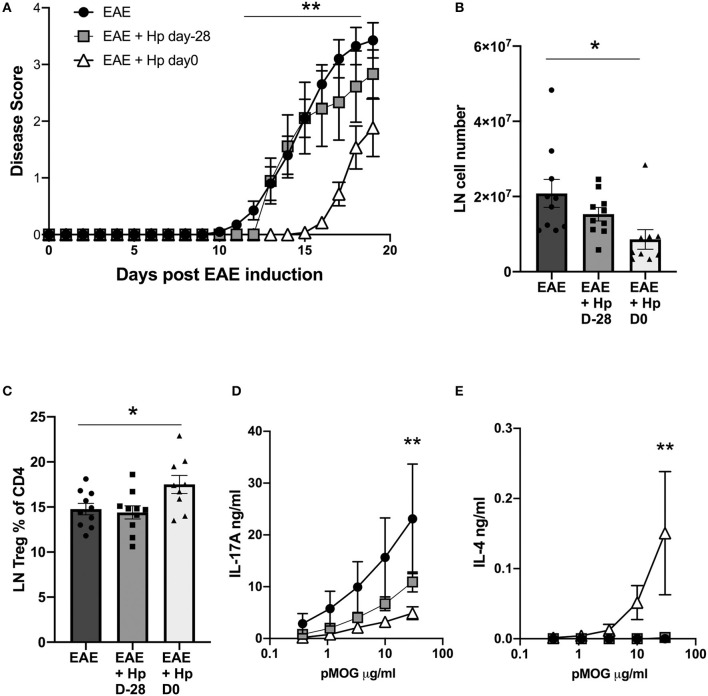Figure 5.
Early, but not chronic, H. polygyrus infection is required to inhibit EAE. H. polygyrus infection was administered 28 days prior to, or on the day of EAE induction. Female C57BL/6 mice were immunized for EAE on day 0 and were either left untreated (EAE), or received 200 L3 H. polygyrus larvae also on day 0 (EAE + Hp D0), or on day−28 (EAE + Hp D-28) prior to EAE immunization. (A) Disease course in mice with EAE with or without H. polygyrus infection at d0 or day−28. (B) Total cell numbers in inguinal lymph nodes at day 19. (C) Foxp3+ cell frequencies in inguinal lymph node. (D) MOG-specific responses of spleen cells, IL-17A measured by ELISA on day 19. (E) MOG-specific responses of spleen cells, IL-4. All data are pooled from two independent experiments, with a total n = 10, and shown are the means ± SEM; (A) was tested by mixed-effects analysis with a multiple comparisons post-tests. (B,C) were tested by 1-way ANOVA with Tukey's multiple comparisons tests. (D,E) were tested by 2-way ANOVA with Bonferroni's multiple comparisons tests. Shown are the means ± SEM *p < 0.05, **p < 0.01.

